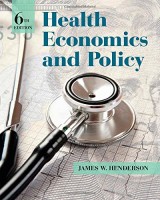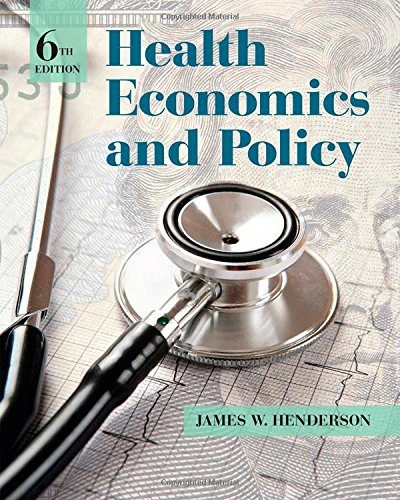 Author: James W. Henderson
Author: James W. Henderson
Publisher: Cengage Learning – 489 pages
Book Review by: Sonu Chandiram
The numbers on health care costs and spending in the United States are staggering, to say the least. The increase in actual dollars spent and the rate spending growth in the last 65 years is incredible and mind-boggling. Here are some statistics to consider, that the author James W. Henderson provides us in the first chapter:
In 1950, the total spending on health care per person in the U.S. was just $82 for the whole year. Today, it is estimated that the spending for each individual will total $10,172 by the end of 2015. That is an unbelievable 124-fold increase! And by 2022, it is estimated that total per capita spending will jump to $14,664.
On a national scale, the total spending was just $12.7 billion in 1950 amounting to only 4.5 percent of the country’s gross domestic product. That has multiplied almost 258 times to over $3.273 trillion in 2015, constituting 18.4 percent of the GDP. And in 2022 it is estimated that total national health care spending will be nearly $5.009 trillion, by then consuming almost a fifth of the total GDP of the U.S.
This book looks at the economics of health and medical care in the United States, which is probably the top spender per person among all nations on earth. It explains how and why economics is used to look at various aspects and parts of our health care system, takes into account the demand- and supply-side considerations, and looks at public policy as it was in the past and how that has changed and is evolving. Here below is an overview of what you will find in its four Parts and 16 chapters:
- The Relevance of Economics in Health and Medical Care
- U.S. Medical Care: A System in Transition
- Using Economics to Study Health Issues
- Analyzing Medical Care Markets
- Economics Evaluation in Health Care
- Demand-Side Consideration
- Demand for Health and Medical Care
- The Market for Health Insurance
- Supply-Side Consideration
- Managed Care
- The Physicians’ Services Market
- The Hospital Services Market
- The Market for Pharmaceutics
- Confounding Factors
- Public Policy in Medical Delivery
- Policies That Enhance Access
- Policies to Contain Costs
- Medical Care Systems Worldwide
- Medical Care Reform in the United States
- Lessons for Public Policy
The proposal and passage by the U.S. Congress of The Patient Protection and Affordable Care Act (known in short as ACA but criticized by some as the ‘unaffordable’ care act) has been one of the major acts of President Barack Obama. He signed that bill into law in March 2010.
The author writes that the Congressional Budget Office estimates that with that law, an additional 25 million people will receive health insurance by 2024, but 31 million people will still remain uninsured.
A lot of changes have been made to that law, and legal challenges to it still remain pending. Future economic implications on the finances individuals, families, and the nation as a whole are therefore difficult to predict or project. This book has been written to help those involved or interested in the U.S. health care system “to understand and analyze the national dialogue on health care issues,” the author writes.
Henderson’s overall goals in authoring this work are to enable readers to:
- Recognize the relevance of economics to health and medical care and to apply economic reasoning to better understand health-related issues.
- Understand the mechanisms of health care delivery in the United States within broad social, political, and economic contexts.
- Explore the changing nature of health and medical care and its implications for medical practice, medical education and research, and health policy.
- Analyze public policy in health and medical care from an economic perspective.
At the beginning of each chapter you will find a policy issue relating its subject of coverage. Among the features you will find are: Issues in Medical Care Delivery, a Back of the Envelope text box, a Profile featuring a significant person in health care, and Key Concepts.
At the end of each chapter you will also find features that help you important lessons learned. They are: Summary and Conclusions, Questions and Problems, and a List of References for further study.
This is a well-researched, well-organized, and well-written book. James W. Henderson has been thorough, comprehensive, and balanced in this work.







